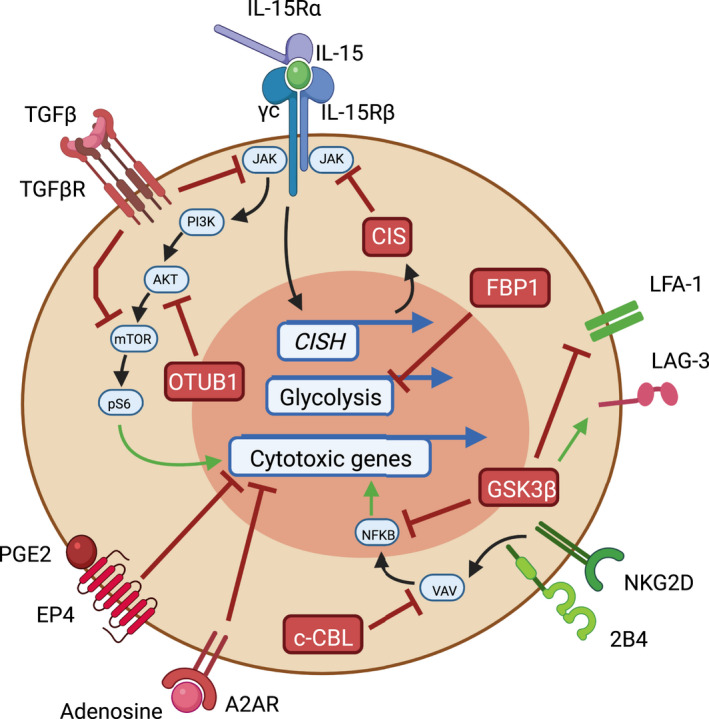Figure 4.

NK cell intrinsic checkpoints. Essential intracellular signalling pathways used by NK cells during an anti‐tumor response are depicted. Red targets and receptors are negative regulators while green arrows and receptors promote NK cell activation or cytotoxicity. IL‐15 signalling is required for NK cell proliferation, survival and anti‐tumor function in the TME. IL‐15 signalling drives expression of negative regulator CISH, producing CIS which acts as negative feedback loop towards IL‐15 signalling. OTUB1 can also suppress IL‐15 signalling by preventing activation of AKT. TGFβ can signal through its receptor TGFβR leading to suppression of multiple downstream targets of IL‐15 signalling. Furthermore, TGF‐β is capable of upregulating FBP1 expression in NK cells which can lead to dysfunction by inhibiting glycolysis. PGE2 through binding receptor EP4 and adenosine through binding A2AR can directly inhibit cytotoxic activity during anti‐tumor NK cell responses. c‐CBL can also inhibit VAV1 which is a common downstream signalling component of activating receptors NKG2D and 2B4 thereby suppressing NFκB‐driven cytotoxic programs. Additionally, GSK3β can inhibit NK cells at multiple points by suppressing NFκB and LFA‐1 expression. GSK3β is also capable of upregulating immunosuppressive surface receptor LAG‐3.
